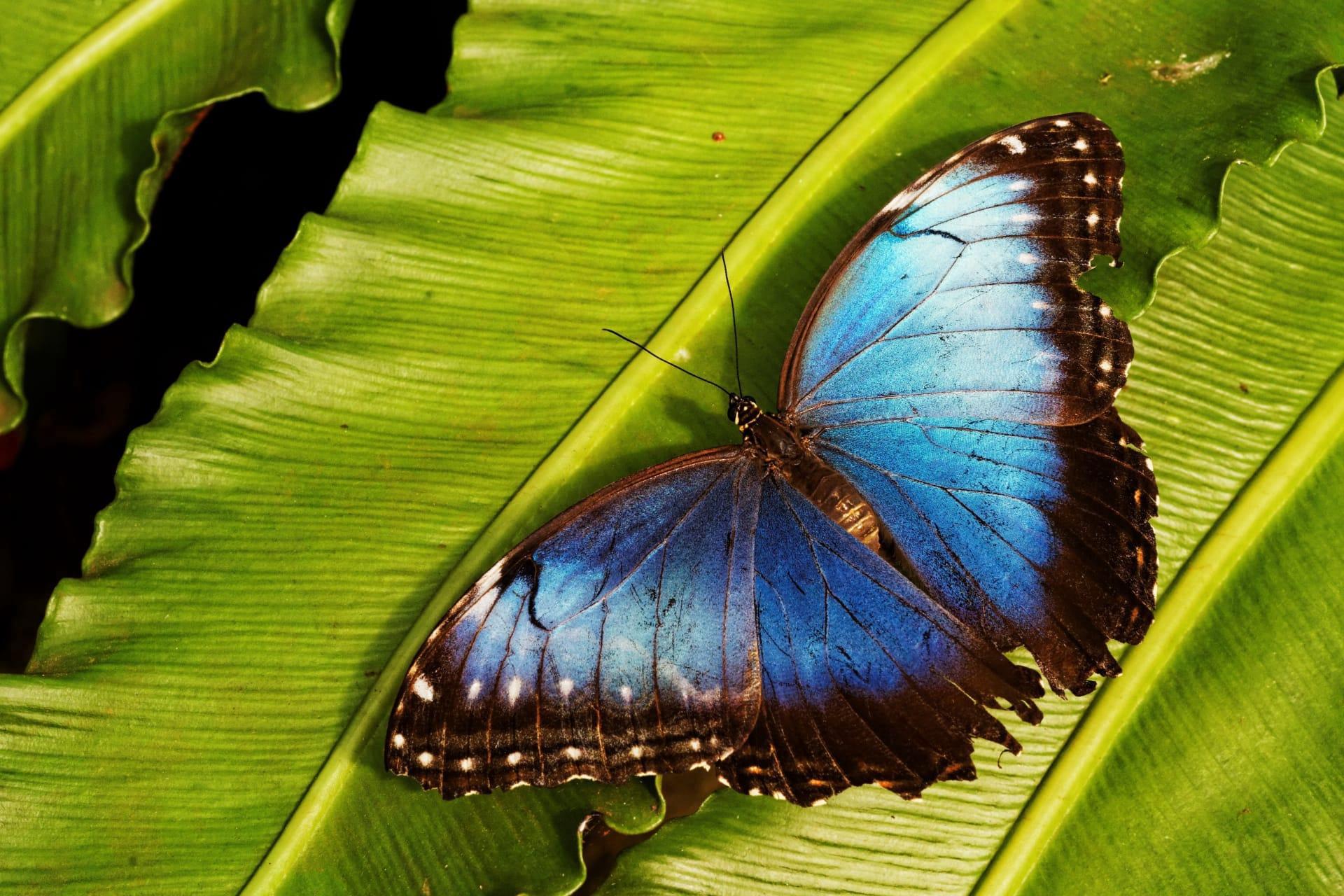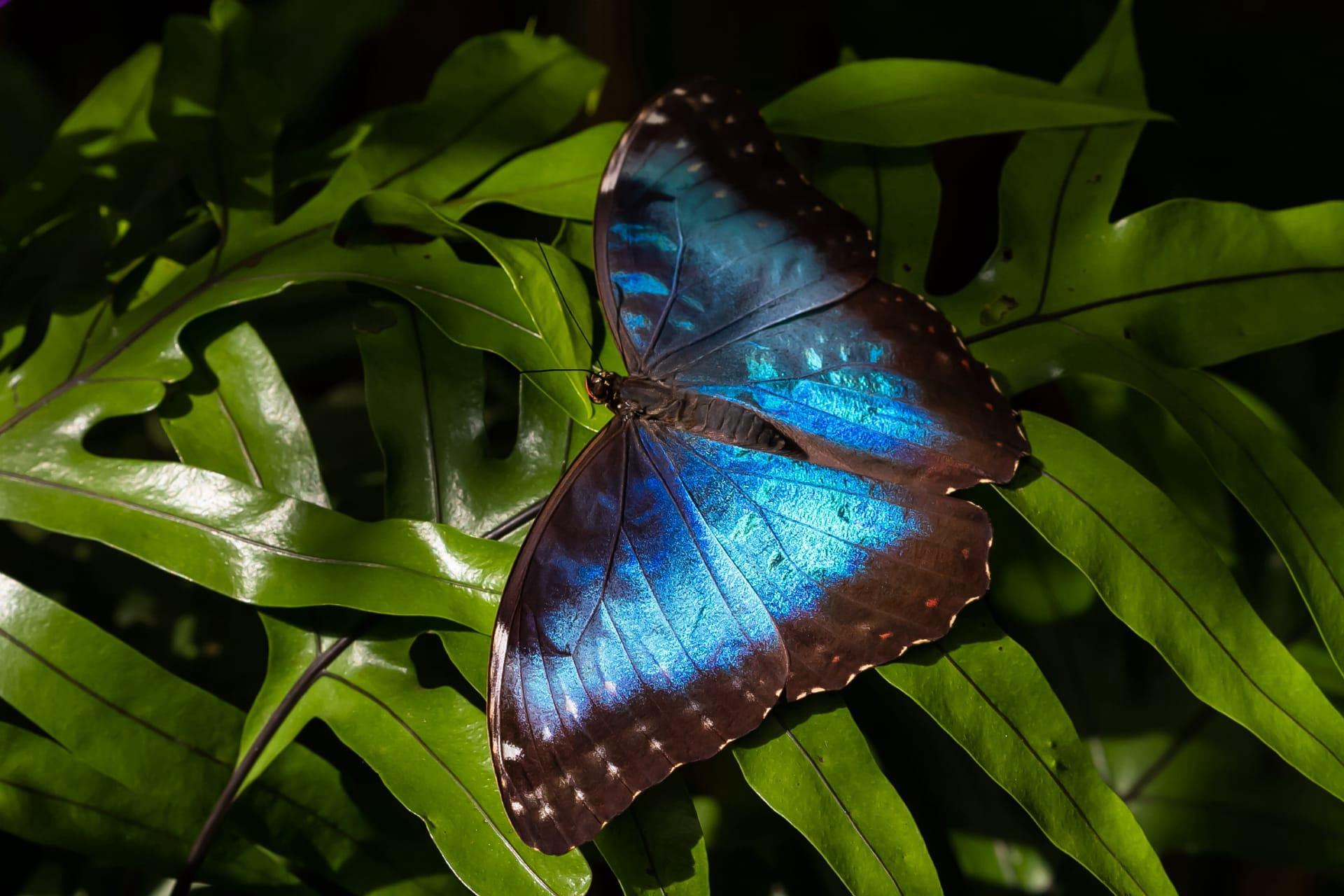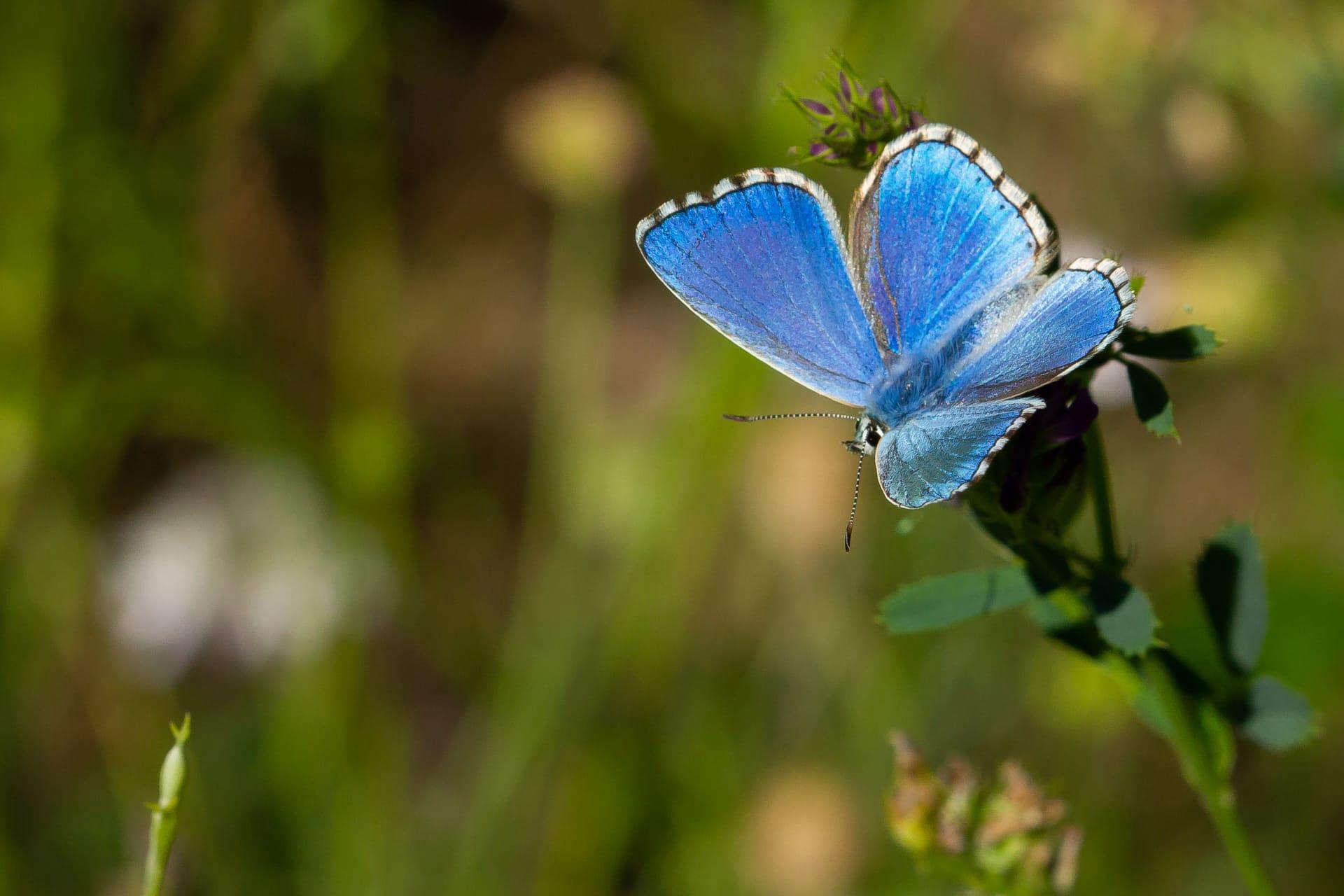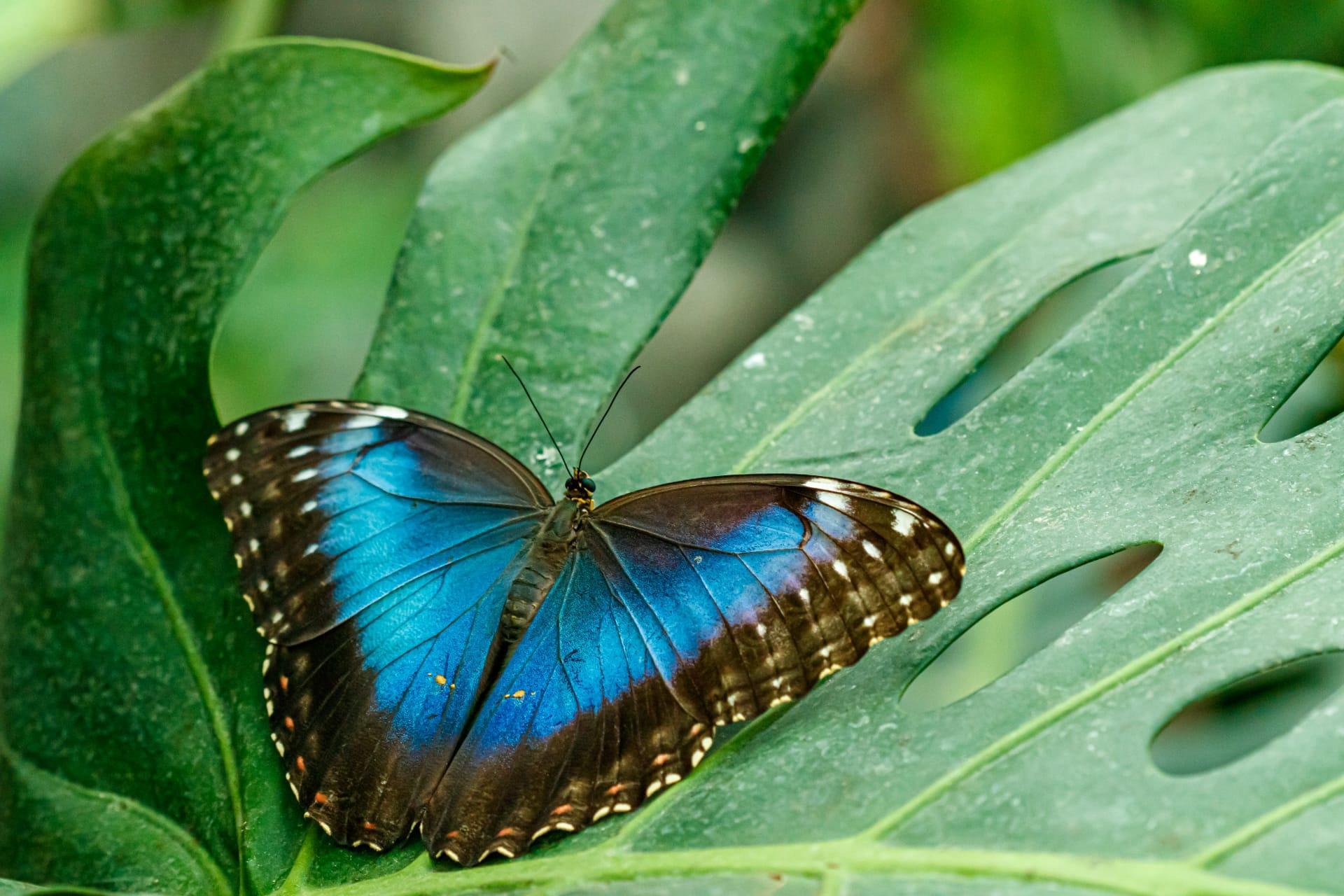Blue Butterfly Trivia
- Home /
- Trivia Question /
- Animal /
- Blue Butterfly Trivia
1
Question: What gives the blue butterfly its vibrant blue color?
Answer: The blue butterfly's color isn't due to pigment. Instead, it's caused by the microscopic structures on its wings that reflect and refract light, creating that iridescent blue. This phenomenon is known as structural coloration. The specific angle at which light hits the wings determines the intensity and shade of the blue.
Question: How long is the lifespan of a blue butterfly?
Answer: The lifespan of blue butterflies varies among species, but on average, they live for about 3 weeks as adults. However, including their time as eggs, larvae (caterpillars), and pupae (chrysalises), their entire life cycle can span several months, typically around 5-7 months.

2
Question: Do blue butterflies have blue blood?
Answer: Contrary to a common misconception, blue butterflies do not have blue blood. Their blood, known as hemolymph, is actually clear. It carries nutrients and hormones to different parts of their body but doesn't have a primary role in oxygen transport like human blood.
Question: Can blue butterflies see their own blue color?
Answer: Blue butterflies cannot perceive their color the way humans do. Butterflies in general have different visual receptors, allowing them to see ultraviolet light, but their perception of color is not like ours. So, they don't experience their brilliant blue coloration in the same way we do.

3
Question: What do blue butterflies eat?
Answer: Adult blue butterflies primarily feed on nectar from flowers, using their long, coiled proboscis to sip it. Some species may also consume pollen, tree sap, or even rotting fruit. The caterpillar stage of the blue butterfly, however, typically feeds on specific host plants, which vary among species.
Question: Are blue butterflies rare?
Answer: Some species of blue butterflies are indeed rare and endangered, like the Large Blue (Phengaris arion) in Europe, which has a unique life cycle involving ant symbiosis. Conservation efforts are in place for such species. However, not all blue butterfly species are rare; their rarity largely depends on the specific species and regional habitat conditions.

4
Question: How do blue butterflies reproduce?
Answer: Blue butterflies, like other butterflies, undergo a process called complete metamorphosis. After mating, females lay eggs on specific host plants. These eggs hatch into caterpillars, which eventually form chrysalises to metamorphose into adult butterflies. This fascinating process ensures the continuation of their species.
Question: What role do blue butterflies play in the ecosystem?
Answer: Blue butterflies, like all butterflies, are important pollinators. They transfer pollen between flowers, aiding in plant reproduction. They also serve as a food source for other animals, thus playing a crucial role in the food chain. Furthermore, their presence indicates a healthy ecosystem.

5
Question: How do blue butterflies defend themselves against predators?
Answer: Blue butterflies employ various defense mechanisms. Some mimic the appearance of toxic or unpalatable species, a strategy known as Batesian mimicry. Others have eyespots on their wings to startle predators. Caterpillars may also have spines or emit unpalatable chemicals to deter predators.
Question: What is the impact of climate change on blue butterflies?
Answer: Climate change poses a significant threat to blue butterflies. It disrupts their life cycles, alters their habitats, and can lead to mismatches in timing between their emergence and the availability of essential resources like host plants and nectar sources. Consequently, it contributes to the decline of some blue butterfly populations.